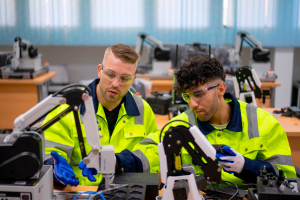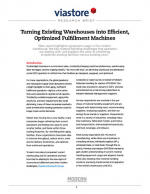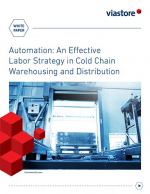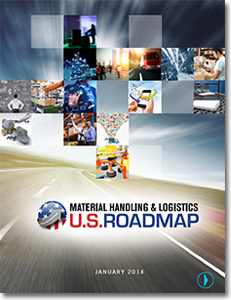The U.S. Roadmap for Material Handling & Logistics
The 67-page Roadmap’s report and action plan will help the logistics and supply chain industry increase productivity, reduce costs, create jobs and improve the global competitiveness of the U.S. between now and 2025.
We live in a highly connected world that is complex and becoming increasingly so.
In the midst of this complexity, all the pieces must fit and work together to accommodate continuous and sometimes mind-boggling change.
This is the environment for material handling and logistics in 2014. Material handling and logistics provide the connections that move goods through the supply chain and into consumers’ hands. The impact of the industry on the U.S. economy is extremely broad, touching everything from raw materials at the point of origin to final delivery at the front door of the consumer to recycling and end-of-life disposal. One faulty connection along the way can mean consumers go without or that they pay too much for their goods.
Fortunately, the industry in the United States is robust and innovative. The United
States has some of the lowest logistics costs of any country, accounting for 8.5% of our Gross Domestic Product.1 Although that is a great competitive position to be in, it is no longer enough. Expectations of consumers of all types are rising rapidly, creating heavy pressure for rapid and profound change. At the material handling and logistics trade show ProMat 2013, futurist Edie Weiner talked about the speed of
that change: “It is happening at an exponential, exponential rate, and I did mean to repeat myself.”
Consider just one aspect of the supply chain: the delivery of goods to consumers. No longer is two-day or next-day delivery enough. The next horizon is already here—same-day and same-hour delivery. It may not be long before people specify exactly where they need goods to be delivered today, not to an address but to the temporary location of an individual. Such a system would require precise timing of delivery; otherwise, the recipient may have moved to another location. What may have sounded fantastical just five years ago now seems to be on the horizon.
This report compiles what more than 100 industry thought leaders had to say about the future of material handling and logistics. Participants at four day-long workshops included material handling and logistics end users, suppliers of equipment and software, and members of academia, government, associations and the media.
The U.S. Roadmap for Material Handling & Logistics was commissioned to identify the current challenges and necessary future capabilities of material handling and logistics. It projects out to 2025 how the industry will need to adapt its technology, practices and workforce to keep pace with the demands of change.
These public workshops also made clear that the material handling and logistics industry has a direct impact on many aspects of our economy. With more than $1.3 trillion in annual spending, the industry has a profound and direct impact on jobs, U.S. global competitiveness and our standard of living.
What’s Related




Favorites





